A sesamoid bone is a bone that is embedded in a tendon or muscle. This word is derived from sesamum, which means “small sesame.”
The sesamoid bones are unique because they are the only bones in the body that are not connected to other bones by joints. These bones are connected to other bones by tendons or placed inside the body’s muscles.
In this article, we will examine the signs, symptoms, and causes of this disorder and tell you how to treat it.
What is the sesamoid bone?
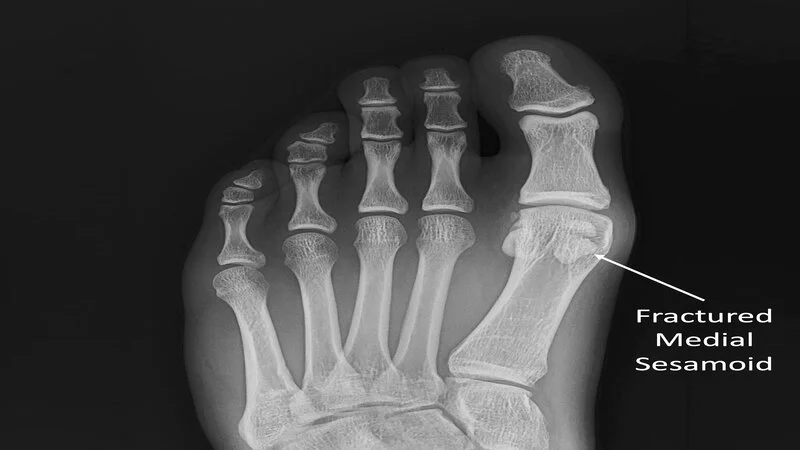
Sesamoids are bones that are attached to muscles by tendons. They are different from most bones in the body, which are connected to each other at joints. Sesamoiditis, or sesamoid inflammation, occurs when the tendons attached to the sesamoid bone become inflamed.
The patella is the largest sesamoid in the body. Other sesamoids, which are very small in size, are located at the bottom of the foot and near the big toe.
Sesamoiditis is usually called inflammation of the plantar tendons that attach to the sesamoid bones below the big toe. Sesamoid bone inflammation is especially common among athletes and dancers. So if you are among them, then you should go through the treatment for sesamoid injuries. Tired or overworked tendons usually cause this disease. Sesamoiditis can usually be treated with anti-inflammatory medications as well as rest.
Therefore, if you suffer from sesamoiditis, you should look for the best foot surgeon in Dubai since they will help you treat your problem.
✔️ Read More: Why Does the Knee Make Noise? Is the Knee Noise Dangerous?
Types of sesamoid bone injuries
Sesamoiditis: Sesamoiditis or sesamoid bone inflammation, includes chronic inflammation of the sesamoid bones and the tendons involved with these bones. Sesamoiditis is usually characterized as a dull, long-lasting pain under the big toe joint.
As soon as you feel pain or think you might have faced this problem, you should visit a doctor. There are so many skilled doctors for treating ankles in Dubai who will help you get the best result.
Fracture: A fracture in the sesamoid bone can be acute or chronic. An acute fracture is caused by trauma and can cause immediate pain and swelling at the fracture site. But a chronic fracture is a stress fracture. A chronic sesamoid fracture causes long-term pain in the foot ball and below the big toe joint. Don’t forget to visit a doctor to treat toe fractures; if you neglect them, you’ll face serious problems.
Turf toe: This involves damage to the soft tissue around the thumb joint. Turf toe causes immediate and severe pain and swelling. This condition usually occurs when the big toe joint moves out of its normal position. This condition usually affects the entire joint of the big toe and limits the movement of the toe.
✔️ Read More: What Is Blunt’s Disease? Symptoms and Treatment Methods
How does sesamoid bone pain occur?
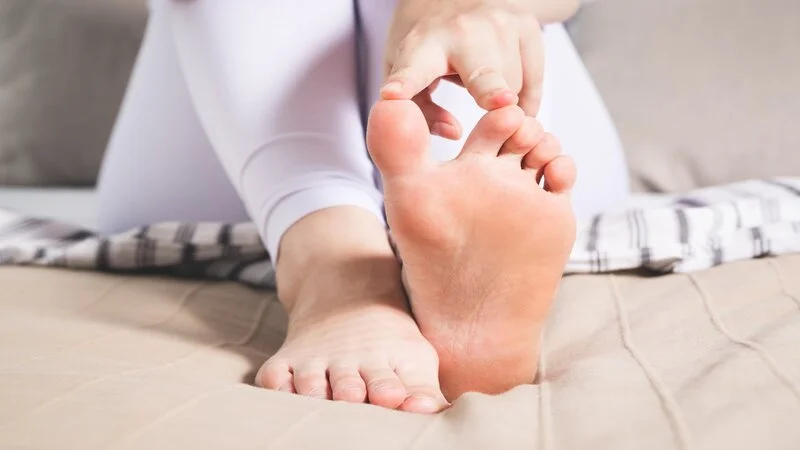
Sesamoid pain can be caused in different ways, which are as follows:
The doctor calls the condition sesamoiditis when the soft tissues around the sesamoid bones become inflamed. This disorder is usually caused by performing a series of repetitive movements in the fingers, which occurs in athletes such as runners.
Arthritis can also occur when the sesamoid bone slips under the thumb bone. The sesamoid forms a joint that moves against the thumb bone. Like other joints in the body, this joint may suffer from arthritis. Arthritis is one of the common problems for people whose arches are very high. The high arch of the foot causes the big toe’s main joint to be stiff and thus puts a lot of pressure on the sesamoid bones.
In some cases, the blood supply to the sesamoid bone decreases, which is called osteochondritis. This disorder causes a part of the bone to be lost. The body’s attempt to repair this area will cause excess calcium to accumulate around the damaged area.
✔️ Read More: What Is a Heel Spur? The Cause of the Disease and Its Treatment Methods
What are the signs and symptoms of the sesamoid bone injury?
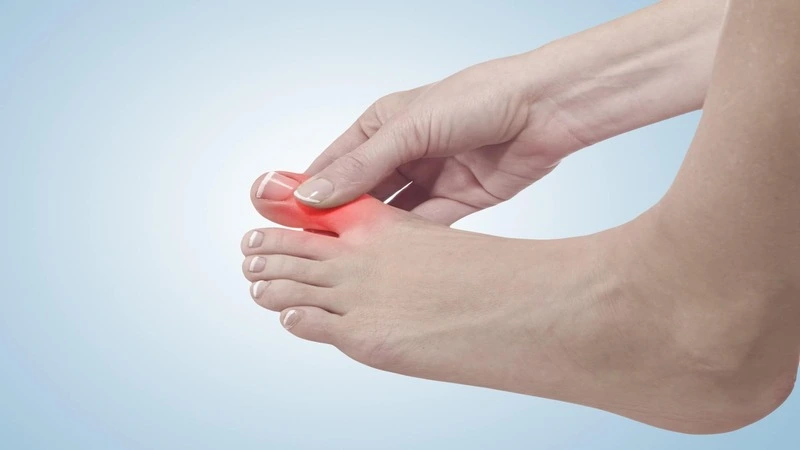
Sesamoid pain is often associated with persistent and vague pain under the big toe, which usually recurs and subsides and is caused by wearing a specific shoe and sports activities involving body weight on this area.
The pain occurs when the tendons around the sesamoid become inflamed; this way, the patient will experience pain under the joint of the big toe and around the chest.
Since sesamoid is a chronic disorder, pain can develop gradually with swelling and bruising. However, when the sesamoid bone is fractured, the patient will feel the pain immediately. The occurrence of pain when bending and straightening the thumb is very common and increases when a lot of pressure is applied to this bone due to activities such as dancing, running, or jumping.
✔️ Read More: Electromyography; Definition and Benefits
How is sesamoid bone pain diagnosed?
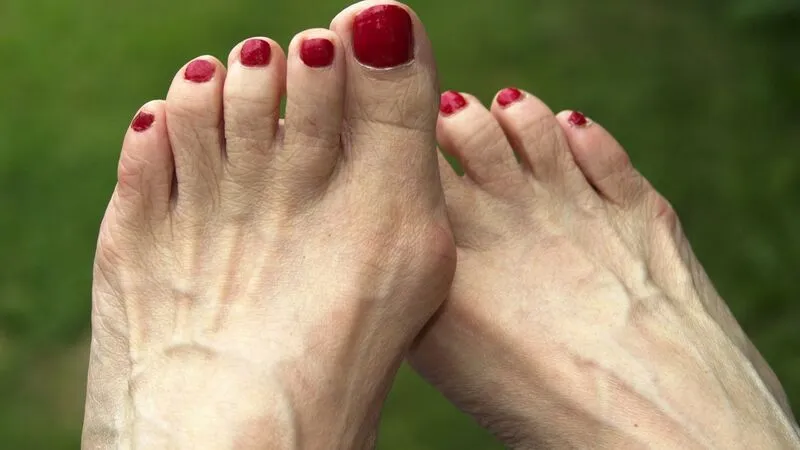
To diagnose a sesamoid injury, the doctor performs a physical examination and examines your foot, focusing on the area of the big toe joint. The doctor does this with the help of his hand movements and asks you to move your foot so that he can examine the joint’s range of motion. It then asks you to walk to analyze your body posture and the pattern of your shoes.
Different types of leg disorders are very similar to sesamoid pain, so accurately identifying the cause of sesamoid pain is challenging. The doctor uses X-ray imaging or other diagnostic methods to confirm and diagnose this disorder.
X-ray imaging can provide good information on this connection with the sesamoid bone and the possible problems that arise in it. The sesamoid bone may look like it is divided into two or more bones on an X-ray. This is the case in about 10% of normal people. If the small space between the bones is mild, there is usually no problem, but if the space created is large, there is a possibility of a fracture, so the doctor requests other diagnostic tests to reach a definitive diagnosis.
✔️ Read More: What Is Physiotherapy? Benefits and Applications
What is the best way to treat sesamoid?

Non-surgical methods are usually used to treat sesamoiditis. In general, conservative treatment methods should be used before surgery. The treatment process depends on the doctor’s diagnosis and the severity of the sesamoid bone injury and includes the following:
- Taping on the sesamoid bone can help relieve pressure from the soles of the feet.
- Manual therapy by an experienced specialist and doing it at home can help improve joint range of motion.
- Wearing the right shoes and changing the previous shoes while exercising and doing daily tasks relieves the pressure from the sesamoid bone and helps to reduce the severity of the patient’s pain.
- The use of special equipment for this disorder can help relieve pressure on the affected area of the sole of the foot to reduce the patient’s pain and speed up his recovery process.
- Taking oral medications such as non-steroidal anti-inflammatory drugs can help temporarily.
- In some cases, steroid injections can help reduce pain and inflammation. Steroid injections are usually performed with the help of image guidance so that the doctor can ensure the correct placement of the needle in the desired area.
- Resting the injured leg and preventing excessive pressure on the sesamoid bone can help control pain, especially in cases where the patient has a sesamoid fracture.
- Surgery is usually only considered when other available treatments have not helped the patient improve. If the patient needs surgery, the doctor will explain the available surgical methods to him to get to know the advantages and disadvantages of each method.
What are the right exercises for sesamoid bone pain?
Some simple exercises that can help improve the pain under the big toe are as follows, but it is better to consult your doctor before to guide you further:
Bend your finger
Considering that the sesamoid bones are located in the area of the thumb, the treatment of this disorder should be started in this area. Doing this exercise can target the bones in this area well to help relieve their pain and inflammation.
The thumb crunch movement is very helpful for people who have pain and inflammation of the thumb. It usually helps to reduce the pain and increase the range of motion of the finger in a short period.
To do this exercise, you should put your foot on a towel, gather the towel with the help of your toes, pull it up, and then place it on the floor and open it with the help of your fingers. You can sit on a chair for better control. If you do this exercise continuously, you will see an improvement in your pain.
✔️ Read More: Haglund’s Deformity; How To Diagnose and Treat It
Raising the leg
Usually, doing this exercise is recommended when the pain and inflammation are completely gone; otherwise it will cause the pain to worsen. To do this exercise, you must stand on your toes and pull your body up.
Stay in this position for a few seconds, then return to the starting point and try to perform this exercise 10 to 15 times during the day to improve the function of the sesamoid bone and reduce the intensity of your pain.
Waving the fingers in a simple way
Doing this exercise is recommended when the toes are painful and inflamed. It gradually reduces the pain. Simple toe stretching can help improve toe range of motion and reduce inflammation. It is recommended to do this exercise while the toes are in a comfortable position, and you can easily stretch your toes.
Your toes should be pulled down and back after fully extending your leg out and using your leg muscles. You must repeat this exercise several times to see its effects. Sesamoiditis is considered a big problem for most people and usually causes the patient a lot of pain. In this way, the pain can be controlled significantly with the help of these sports exercises.
How long does it take for the sesamoid bone to heal?

If you have pain under the big toe, it usually takes about 2 to 3 weeks to heal completely with the help of proper treatment methods. Also, if you have suffered a serious injury such as a sesamoid bone fracture, your treatment period will be about 6 to 8 weeks, provided that no pressure is applied to the damaged bone.
Not treating this disorder usually causes many problems for the patient. That’s why it is necessary to go to a physical therapist or manual therapy specialist to help speed up the recovery process.
✔️ Read More: What Is a Ligament? Types of Ligaments and the Causes of Their Injury
7 ways to treat sesamoid bone pain at home
- In most cases, the pain under the thumb can be treated at home, and some of these helpful methods are as follows:
- Avoiding exercise that causes pain or reducing the frequency of doing it, such as running.
- You should use an ice pack for 10 minutes every three hours to reduce the swelling in your feet.
- Use short and suitable heels.
- To prevent tendonitis in the future, avoid wearing high-heeled shoes that put a lot of pressure on the foot.
- After resuming daily activities, you should use shoes that protect your feet well.
How to prevent sesamoid bone pani
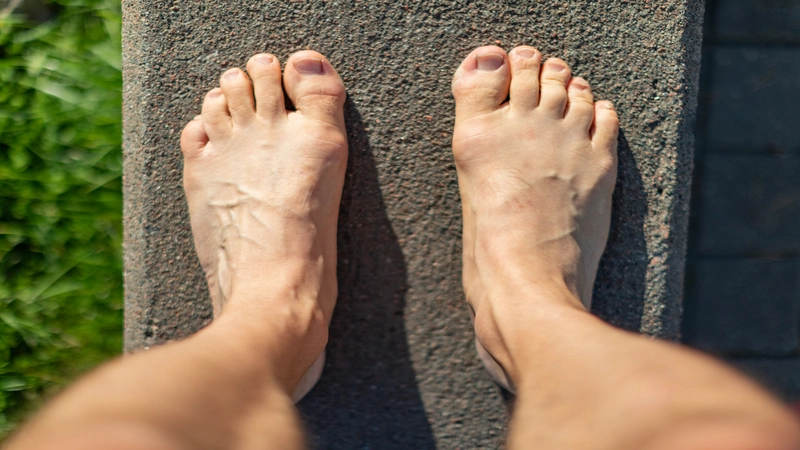
Wearing comfortable and flexible shoes can help prevent sesamoid bones. Shock-absorbing shoes are especially effective. Shoes should be changed every 6 months or more often if the person is very active.
People can use supportive insoles or special pads called metatarsal pads. This pad provides more support to the soles of the feet to reduce pressure on the sesamoid bones.
Sometimes, sesamoiditis is caused by overpronation. In this case, your feet turn slightly inwards while walking. You can get help from a physiotherapist or an experienced coach to correct this. This trainer can teach you how to reduce the pressure on the leg joints.
Ways to prevent overpronation include taking smaller steps and focusing pressure on the midfoot rather than the edges of the shoe when placing the foot on the ground. The doctor can prescribe custom orthotics (insoles) to reduce the incidence of excessive pronation.
After a person’s symptoms improve, they should change their activity patterns to reduce the risk of getting sesamoiditis again. For example, if excessive running causes or aggravates sesamoid bone, the person should replace running with other sports such as cycling or swimming that put less pressure on the joints.




